3rd Grade math properties worksheets: Terms, PEMDAS, and more
Are you a 3rd-grade teacher or parent and looking for simple ways to teach math properties to your 3rd graders? Then you are in the right place. In this article, we will provide you with well-structured and outstanding 3rd Grade math properties worksheets that you can use to teach 3rd graders the fundamental rules that govern basic math concepts.
-
Some of the many fundamental math rules you will find here are PEDMAS and math terms that will help 3rd graders solve math faster and more accurately.
So, stay put in this article and help your Grade 3 students learn what math properties are, why they are essential, and how to use them to solve any math problem. In addition, Mathskills4kids.com has an awesome collection of fun and easy worksheets that 3rd graders can use to practice these vital math skills.
So, let's get started!
Welcome to the wonderful world of math properties!
Welcome to the wonderful world of math properties that will help 3rd Grade students solve math problems easily and tackle more advanced mathematical concepts accurately and confidently.
Math properties are rules that tell us how numbers behave when we add, subtract, multiply, or divide them. They help us simplify calculations and make math easier and more fun. For example, did you know you can add two numbers in any order and get the same answer? That's because of a math property called the commutative property of addition.
There are many other math properties that you can find on Mathskills4kids.com. However, let’s see what this article has prepared for us.
-
BROWSE THE WEBSITE
-
DOWNLOAD FREE WORKSHEETS
-
-
3rd GRADE MATH TOPICS
- Number and compapring
- Place value
- Addition
- Subtraction
- Understand multiplication
- Multiplication skill builders
- Multiplication fluency
- Multiplication
- Understand division
- Division skill builders
- Division fluency
- Division practice
- Mixed operation
- Properties
- Equations & variations
- Estimate & rounding
- Logical reasoning
- Patterns
- Money
- Telling time
- Data graph & probability
- Understanding fractions
- Equivalent fractions
- Comparing and ordering fractions
- Operations with fractions
- Unit of measurement
- Two-dimensional shapes
- Triangles and quadrilaterals
- 3D shapes
- Geometric measurement
-
-
The meaning of terms : addition subtraction multiplication division
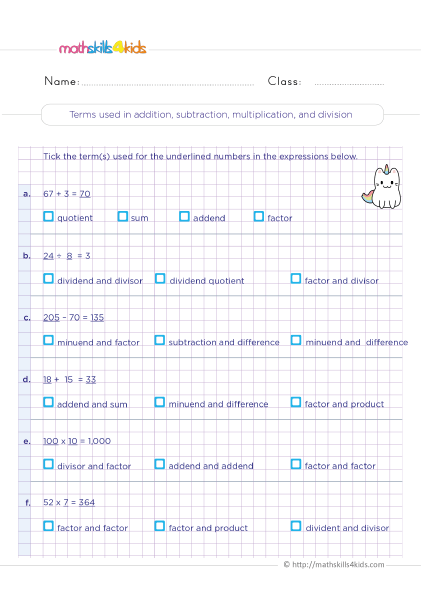 Print it...
Print it...
-
What are the properties of addition?
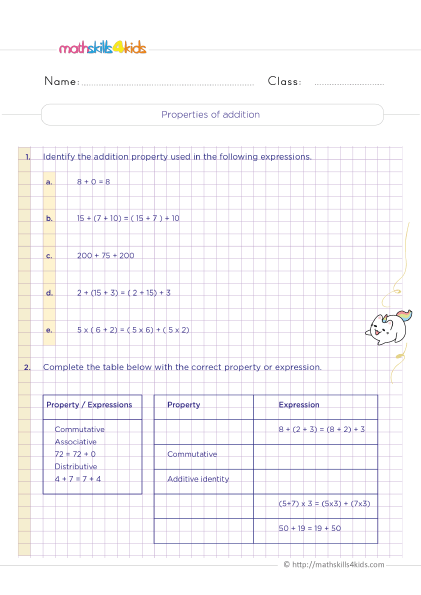 Print it...
Print it...
-
What are the properties of multiplication?
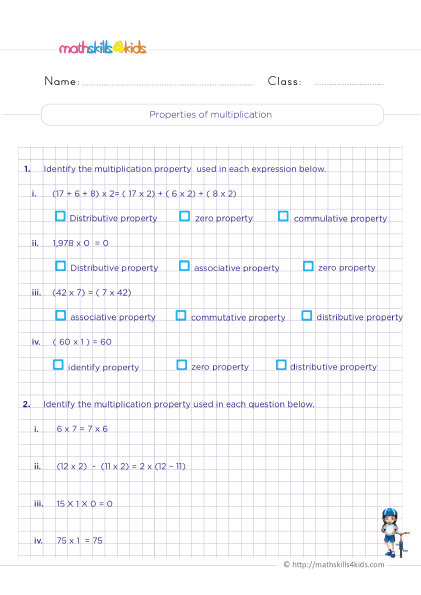 Print it...
Print it...
-
Find the missing factor using the distrubutive property
 Print it...
Print it...
-
How do you multiply using properties of multiplication?
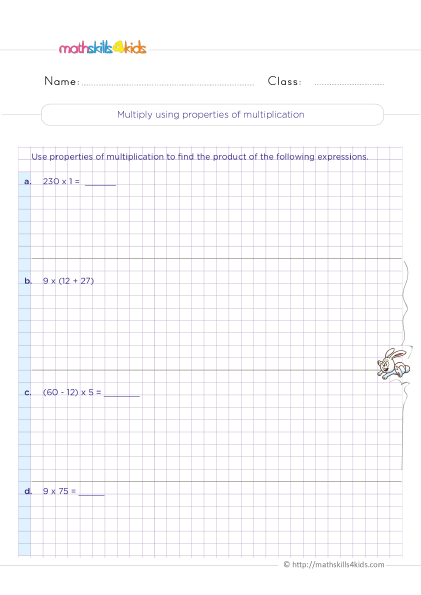 Print it...
Print it...
-
Relationship between multiplication and division
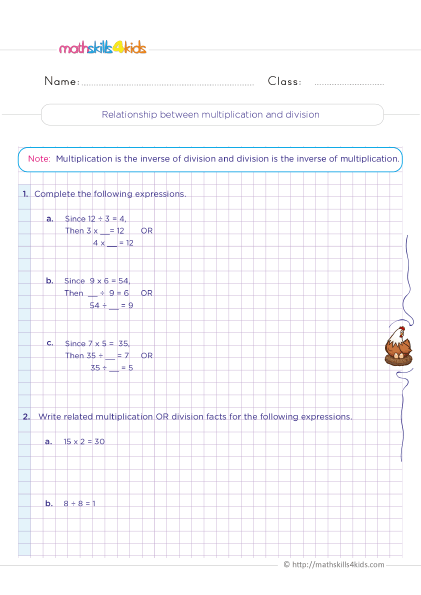 Print it...
Print it...
-
The meaning of terms : addition subtraction multiplication division
-
Buying is supporting us!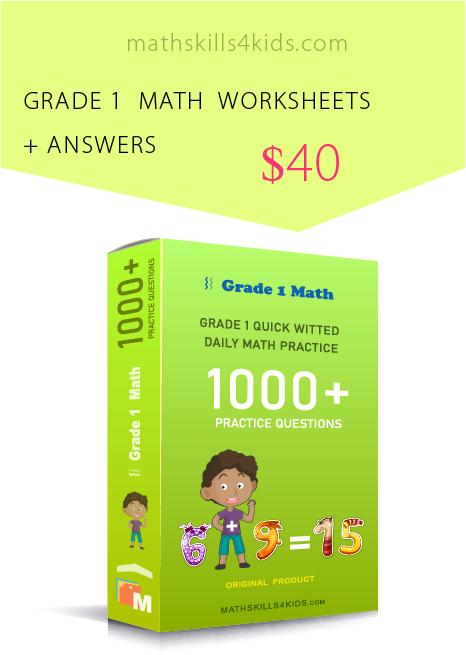
Buy Now...
-
-
What are math properties, and why do we need them?
Math properties are fundamental rules and characteristics we can follow when solving math operations. These properties are like shortcuts, so we need them to help us do math faster and more accurately.
They also help us understand how numbers work and how they relate to each other. For example, did you know multiplying a number by 1 does not change its value? That's because of a math property called the identity property of multiplication.
There are many other math properties that we will learn in this article.
-
Fun and easy terms to remember: Commutative, Associative, and Distributive
This article will focus on three main types of math properties: commutative, associative, and distributive. These are big words/terms, but they are fun and easy to remember if you think of them as actions. Let's see what they mean:
- Commutative means to switch or change the order of something. For example, the commutative property of addition says that a + b = b + a. This means we can add two numbers in any order and get the same answer. The same is true for multiplication: a x b = b x a.
- Associative means to group or combine things. For example, the associative property of addition says that (a + b) + c = a + (b + c). This means we can group three numbers in any way and get the same answer when we add them. The same is true for multiplication: (a x b) x c = a x (b x c).
- Distributive means to spread or share something over something else. For example, the distributive property of multiplication over addition says that a x (b + c) = (a x b) + (a x c). This means we can multiply a number by the sum of two numbers by multiplying it by each number separately and then adding the results.
-
How to use PEMDAS to solve any math problem
Now that we know some math properties, how do we use them to solve math problems? A simple rule tells us the order of operations we will follow when we have more than one operation in a math expression. The rule is called PEMDAS, which stands for Parentheses, Exponents, Multiplication and Division, Addition and Subtraction.
Here is what it means:
- Parentheses: We need to solve whatever is inside parentheses first before doing anything else.
- Exponents: We need to calculate any powers or roots next.
- Multiplication and Division: We do any multiplication or division from left to right after parentheses and exponents.
- Addition and Subtraction: We do any addition or subtraction from left to right after multiplication and division.
For example, let's say we have this math expression: 2 + 3 x (4 - 1)2. How do we solve it using PEMDAS?
- First, we look for parentheses and solve what is inside them: 4 - 1 = 3.
- Next, we look for exponents and calculate them: 32 = 9.
- Then, we look for multiplication and division and do them from left to right: 3 x 9 = 27.
- Finally, we look for addition and subtraction and do them from left to right: 2 + 27 = 29.
So, the answer is 29.
-
Practice makes perfect: Try these awesome Mathskilsl4kids’ 3rd Grade math properties worksheets
Now that your kids have learned some excellent math terms and how to use PEMDAS, it's time to put their skills to the test! We have prepared some awesome Mathskilsl4kids’ 3rd Grade math properties worksheets for them to practice and have fun.
You can download them for free and print them or do it with them online.
Let's take a look at what each worksheet is about.
- Terms used in addition, subtraction, multiplication, and division
This worksheet will help your 3rd Grade kids review important basic terms when doing math operations. For example, do you know what a sum is? How about a difference? A product? A quotient? A factor? A dividend? A divisor? Don't worry if you don't remember them all. This worksheet will refresh your memory and give you some examples.
- Understanding brackets or parentheses
This worksheet will teach 3rd graders how to use brackets or parentheses in math expressions. Brackets or parentheses are used to group numbers or terms and tell us which part of the expression we need to do first.
For example, in the expression 2 + (3 x 4), we need to do the multiplication inside the brackets first, then add 2. This worksheet will show how to use brackets or parentheses correctly and how they can change the value of an expression.
- Properties of addition
This worksheet will help kids practice the properties of addition that they learned earlier. They will see how the commutative and associative properties work for addition and how they can make adding easier and faster. We will also provide some examples of using these properties to simplify expressions.
- Complete the expression using properties of addition
This worksheet will challenge children to use their knowledge of the properties of addition to complete some expressions. You will give them one part of an expression to fill in the missing part using the commutative or associative properties.
For example, if we have (19 + _____ ) + 7 = 19 + (8 + 7), we can fill in any number for the blanks and use the commutative property to make a true statement.
- Properties of multiplication
This worksheet will help children to practice the properties of multiplication that they learned earlier. They will see how the commutative, associative, and distributive properties work for multiplication and how they can make multiplying easier and faster. We will also provide some examples of using these properties to simplify expressions.
- Find the missing factor using the distributive property
This worksheet will challenge 3rd graders to use their knowledge of the distributive property to find a missing factor in a multiplication problem. They will be given a multiplication problem broken down into two smaller problems using the distributive property.
For example, if we have 6 x 12 = (6 x 10) + (6 x ___), we can use the distributive property to find out what number goes in the blank.
- Relationship between multiplication and division
This worksheet will teach your children how multiplication and division are related and how they can help each other. They will learn that division is the opposite of multiplication and that you can use one operation to check the answer of the other.
For example, if we know that 4 x 5 = 20, we can use division to check that 20 ÷ 5 = 4 and 20 ÷ 4 = 5. This worksheet will show kids how to use this relationship to solve problems.
Each worksheet has a set of questions and an answer key. You can check your learner’s answers after they finish each worksheet.
Please encourage them to do the worksheets without looking at the answer key to see how well they’ve understood the concepts. If a child gets stuck, don't worry! You can always review the previous sections of this article or ask them to watch some videos online to refresh their memory.
- Terms used in addition, subtraction, multiplication, and division
Bonus: Find more resources to reinforce math properties learning in third Grade here!
If you and your child enjoyed learning about Terms, PEDMAS, and more with these 3rd Grade math properties worksheets, please check out some more resources to help them reinforce this topic.
Here are some of our favorites:
- K5 Learning: This website offers free worksheets, flashcards, and inexpensive workbooks for kids, from adding and subtracting with parenthesis to full PEMDAS worksheets, including exponents. https://www.k5learning.com/free-math-worksheets/third-grade-3/order-of-operations.
- SplashLearn: This website has a lot of worksheets and games that help kids to master math properties without overwhelming them, and hence, paves the way to solve large number problems through composition & decomposition. https://www.splashlearn.com/math-vocabulary/number-sense/number-properties.
Thank you for sharing the links of MathSkills4Kids.com with your loved ones. Your choice is greatly appreciated.
-
Congratulations! You have reached the end of this article. You have learned a lot about math properties and how to use them to solve math problems. Your Grade 3 children have also practiced their skills with awesome 3rd Grade math properties worksheets: Terms, properties, and more. They are now ready to ace any math test or quiz that comes their way!
Math properties are not only useful for school but also for everyday life. They help us understand how numbers work and how to manipulate them to get the desired results. They also make math more fun and exciting because we can discover new patterns and relationships among numbers.
We hope you enjoyed this article and learned something new. If you did, please share it with your friends and family who might also be interested in math properties. And remember to check out our website, Mathskills4kids.com, on different math topics for more fun and learning!
Thank you for reading, and happy math teaching!
